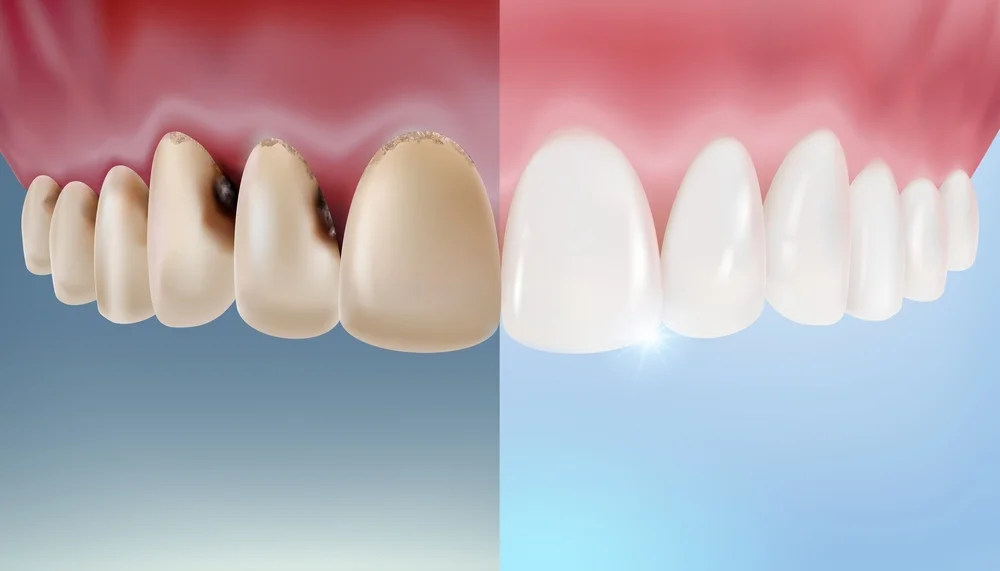Teeth Whitening Techniques

Outline
- Teeth Whitening Introduction
- Importance of a Bright Smile
- Overview of Teeth Whitening
- Understanding Teeth Discoloration
- Causes of Teeth Discoloration
- Types of Stains: Extrinsic vs. Intrinsic
- Professional Teeth Whitening Techniques
- In-Office Whitening Procedures
- Laser Teeth Whitening
- Professional Whitening Kits
- Over-the-Counter Teeth Whitening Solutions
- Whitening Toothpaste
- Whitening Strips
- Whitening Gels and Pens
- Whitening Mouthwash
- Natural Teeth Whitening Methods
- Baking Soda and Hydrogen Peroxide
- Oil Pulling
- Apple Cider Vinegar
- Activated Charcoal
- Home Remedies for Teeth Whitening
- Banana Peel
- Orange Peel
- Strawberries and Baking Soda
- Choosing the Right Whitening Technique
- Factors to Consider
- Sensitivity Issues
- Cost Comparison
- Maintaining Your Whiter Smile
- Good Oral Hygiene Practices
- Foods and Drinks to Avoid
- Regular Dental Check-ups
- Potential Risks and Side Effects
- Tooth Sensitivity
- Gum Irritation
- Overuse Consequences
- Frequently Asked Questions (FAQs)
- Is teeth whitening safe for everyone?
- How long does teeth whitening last?
- Can teeth whitening damage enamel?
- Are there any foods that naturally whiten teeth?
- How often can I whiten my teeth?
Teeth Whitening Techniques
Introduction
Ever notice how a bright, white smile can light up a room? It’s a small detail that leaves a significant impression. But let’s face it, keeping those pearly whites gleaming isn’t always easy. Between coffee, tea, red wine, and just the passage of time, our teeth can lose their luster. That’s where teeth whitening comes in, and oh boy, do we have options!
Understanding Teeth Discoloration
Before diving into the nitty-gritty of teeth whitening, it’s crucial to understand why teeth get discolored in the first place.
Causes of Teeth Discoloration
There are several reasons why teeth can lose their brightness:
- Food and Drinks: Coffee, tea, red wine, and even some fruits can stain your teeth.
- Tobacco: Smoking or chewing tobacco can lead to yellowish or brownish teeth.
- Poor Dental Hygiene: Inadequate brushing and flossing can result in plaque and tartar buildup, discoloring teeth.
- Aging: As we get older, the enamel on our teeth wears away, exposing the yellowish dentin underneath.
- Medications: Certain medications can also cause tooth discoloration.
Types of Stains: Extrinsic vs. Intrinsic
Understanding the types of stains can help determine the best whitening method:
- Extrinsic Stains: These are surface stains caused by external factors like food, drinks, and smoking. They affect the outer layer of the tooth (enamel).
- Intrinsic Stains: These are deeper stains that occur within the tooth structure, often caused by aging, trauma, or medication.
Professional Teeth Whitening Techniques
When it comes to achieving dramatic results, professional tooth bleaching is hard to beat.
In-Office Whitening Procedures
These are performed by dentists and offer the quickest results. The process usually involves:
- Cleaning: Removing plaque and tartar.
- Applying Whitening Gel: A high-concentration peroxide gel is applied to the teeth.
- Activation: Sometimes, a special light or laser is used to enhance the gel’s effectiveness. This method can make your teeth several shades lighter in just one visit!
Laser Teeth Whitening
This advanced technique uses laser technology to speed up the whitening process. It involves:
- Preparation: A protective barrier is placed on the gums.
- Application: Whitening gel is applied to the teeth.
- Laser Activation: A laser is used to activate the gel, breaking down stains and discoloration.
Professional Whitening Kits
For those who prefer at-home treatments but want professional results, dentists can provide custom-fitted trays and professional-grade whitening gel. These kits are more effective than over-the-counter products and allow you to whiten your teeth at your convenience.
Over-the-Counter Teeth Whitening Solutions
If you’re looking for a more budget-friendly approach, there are several effective over-the-counter options.
Whitening Toothpaste
Whitening toothpaste uses gentle abrasives and chemical agents to help eliminate surface stains. While they won’t dramatically change your tooth color, they can help maintain your bright smile.
Whitening Strips
These slim, flexible strips are covered with a peroxide-based whitening gel. They are easy to use and can produce noticeable results in a few weeks. Just apply them to your teeth, wait for the recommended time, and voila!
Whitening Gels and Pens
Whitening gels and pens offer a more targeted approach. The gel is applied directly to the teeth using a small brush or pen. They are convenient for on-the-go whitening and touch-ups.
Whitening Mouthwash
Whitening mouthwashes contain hydrogen peroxide and can help reduce surface stains. They are best used as a complement to other whitening methods for maintaining results.
Natural Teeth Whitening Methods
If you prefer a more natural approach, there are several household items that can help whiten your teeth.
Baking Soda and Hydrogen Peroxide
A blend of baking soda and hydrogen peroxide can serve as a natural teeth whitener. Baking soda’s mild abrasiveness helps remove stains, while hydrogen peroxide has bleaching properties.
Oil Pulling
An ancient practice that involves swishing oil (usually coconut oil) in your mouth for 10-20 minutes. It’s believed to remove bacteria and promote oral health, which can help keep your teeth looking brighter.
Apple Cider Vinegar
Apple cider vinegar’s acidic nature gives it natural whitening properties. However, it should be used sparingly to avoid damaging tooth enamel.
Activated Charcoal
Activated charcoal can absorb toxins and stains from your teeth. Brushing with activated charcoal powder a few times a week can help whiten your teeth naturally.
Home Remedies for Teeth Whitening
Some common household items can also contribute to a brighter smile.
Banana Peel
Rubbing the inside of a banana peel on your teeth for a few minutes can help reduce stains. The minerals in the peel, like potassium and magnesium, are believed to penetrate the teeth and whiten them.
Orange Peel
Similar to banana peel, orange peel contains compounds that can help whiten teeth. Rubbing the inside of an orange peel on your teeth might help reduce minor stains.
Strawberries and Baking Soda
Strawberries have malic acid, which can aid in whitening teeth. Mashing up strawberries and mixing them with baking soda creates a natural whitening paste.
Choosing the Right Whitening Technique

Factors to Consider
- Type of Stain: Extrinsic stains respond well to over-the-counter products, while intrinsic stains may require professional treatment.
- Sensitivity: Some whitening methods can cause tooth sensitivity. If you have sensitive teeth, look for products designed for sensitivity.
- Budget: Professional treatments are more expensive but offer quicker, more dramatic results. Over-the-counter and natural methods are more affordable but may take longer to see results.
Maintaining Your Whiter Smile
Whitening your teeth is just the beginning. Keeping them white requires some effort.
Good Oral Hygiene Practices
Brushing twice a day, flossing daily, and using an antiseptic mouthwash can help keep your teeth clean and prevent stains.
Foods and Drinks to Avoid
Limiting intake of stain-causing foods and drinks like coffee, tea, red wine, and dark berries can help maintain your white smile.
Regular Dental Check-ups
Visiting your dentist regularly for cleanings and check-ups can help keep your teeth healthy and bright.
Potential Risks and Side Effects
While teeth whitening is generally safe, it’s not without potential risks.
Tooth Sensitivity
Some whitening products can cause temporary tooth sensitivity. Using toothpaste designed for sensitive teeth and avoiding extremely hot or cold foods can be beneficial.
Gum Irritation
Whitening gels and strips can sometimes irritate the gums. Ensuring proper application and not overusing these products can minimize irritation.
Overuse Consequences
Over-whitening can damage tooth enamel and increase the risk of cavities. It’s important to follow the recommended guidelines and not overdo it.
Conclusion
A bright, white smile is a confidence booster and can make a significant impact on your overall appearance. Whether you choose professional treatments, over-the-counter products, or natural methods, there’s a tooth bleching technique that’s right for you. Remember to consider your specific needs and consult with a dental professional if you have any concerns. Keep up with good oral hygiene practices and regular dental visits to maintain your dazzling smile.
FAQs
Is teeth whitening safe for everyone?
Teeth whitening is generally safe for most people, but it’s best to consult with a dentist, especially if you have dental issues or sensitive teeth.
How long does teeth whitening last?
The duration of teeth whitening results varies depending on the method used and your oral care habits. Professional treatments can last up to a year, while over-the-counter products may last a few months.
Can teeth whitening damage enamel?
When used as directed, tooth bleaching products are safe and should not damage enamel.
